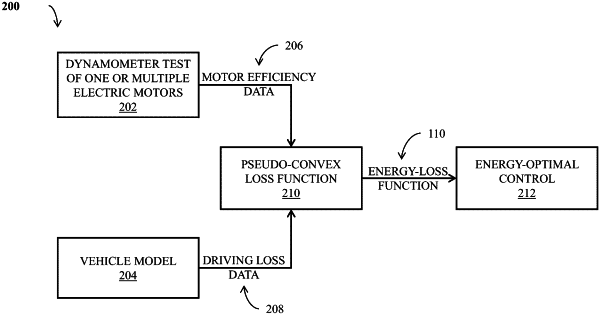| CPC B60L 15/2045 (2013.01) [B60L 15/2054 (2013.01); B60K 1/02 (2013.01); B60L 2240/12 (2013.01); B60L 2240/14 (2013.01); B60L 2240/421 (2013.01); B60L 2240/423 (2013.01); B60L 2240/486 (2013.01)] | 19 Claims |

|
1. A method for controlling a motion of an electric vehicle (EV), wherein the method uses a processor coupled to a memory storing an energy-loss function mapping values of acceleration and velocity of the EV to energy dissipation of the EV resulting from controlling one or multiple electric motors of the EV to move the EV at corresponding acceleration and velocity values, wherein the processor is configured to execute instructions stored in the memory for implementing the method, wherein the instructions, when executed by the processor carry out steps of the method, comprising:
determining a velocity profile moving the EV from an initial velocity over a period of time by minimizing the energy dissipation according to the energy-loss function, wherein the velocity profile is a function of time, and wherein the energy-loss function corresponds to a pseudo-convex function having a global minimum, and the energy-loss function is determined based on at least the model of the longitudinal motion, the predetermined torque-split function, and the predetermined motor efficiency function; and
controlling the one or multiple electric motors of the EV to generate a torque for moving the EV according to the velocity profile.
|